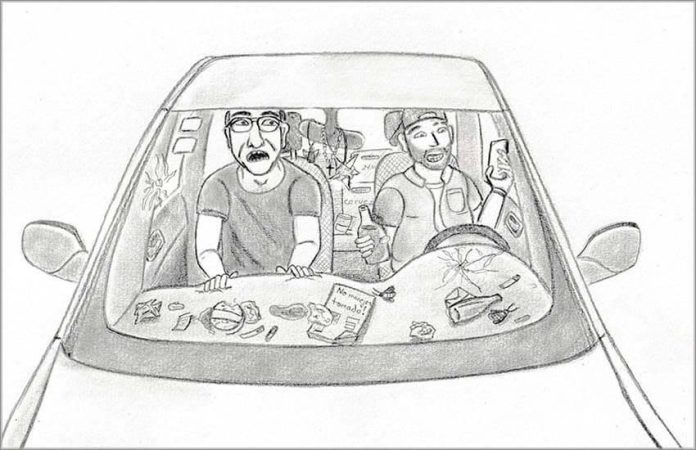I’m not sure when my thoughts changed from “I want to get home” to “I want to get home alive,” but change they did.
I was in San Pablo Oztotepec, in the Mexico City borough of Milpa Alta, to get some information for an article that I was writing about the traditional alcoholic beverage pulque. Eduardo, a young guy I’d met in the nearby pueblo of San Pedro Atocpan, introduced me to Don Pedro, a clachiquero, which is what people who make pulque are called; it’s from the Náhuatl language.
Pulque is slightly alcoholic — typically between 2% and 4% alcohol — and most people I’ve talked to mention its medicinal properties. Eduardo may also drink it for medicinal purposes, but he also drinks it to, well, get drunk.
“It makes me happy,” he told me, explaining that although it’s mildly alcoholic, if you drink a couple of liters, as Eduardo did, you’re gonna get drunk.
And he did. He drank a liter while we toured Don Pedro’s maguey plants and more than a liter as we walked around the pueblo the rest of the day. I realized he was getting drunk when he began slapping people on the back, laughing a lot, talking loudly to everyone he met and the fact that although it was clear (to me at least) that he’d had enough pulque, he kept drinking more.
I didn’t really mind at first, but my work was done, it was getting toward late afternoon and I did want to get back home, which was about a 30-minute drive away. Eventually, after a couple of more stops to talk with people and a couple more sips from the bottle of pulque, we got in the car. That’s when the real fun started.
Because by that point, he was not getting drunk. He was drunk.
Having lived in Mexico for a bit over three years, I’m thoroughly familiar with what driving is like here. It’s a cross between a video game and pushing shopping carts in a supermarket.
In supermarkets, no one stays on one side of an aisle. We weave. We stop. We block the aisle. We back up. This is exactly what driving is like in Mexico. Except drivers in Mexico are driving something much larger than a shopping cart and going much faster.
It can be nerve-wracking. Add a young guy and excess alcohol consumption to the mix and it’s more than nerve-wracking, it’s life-threatening. Toss in narrow, twisting roads hugging hillsides and a lack of guard rails and even an avowed atheist like writer Christopher Hitchens would start praying.
By my count, we almost had two head-on collisions, which I’m sure Eduardo wasn’t even aware of. Why do I think so, you may ask. Because he was texting and calling while driving.
We came close to ending up in a ditch when he became more concerned with reading a text than watching the road. He stopped and parked several times to stare at his phone. OK, “park” isn’t a really accurate description because when you actually do park, it’s by the side of a road, perhaps smack up against a curb. Not so in this case.
Eduardo would stop the car in the middle of the road and read or answer a text. Cars just went around us.
The route we were taking was about 20 miles long from beginning to end, but I figure we tacked on several extra miles due to how much he was weaving.
But we made it. Maybe those prayers I was fervently saying, which were dredged up from somewhere deep in my memory, had some effect.
Or maybe I gotta start believing in miracles.
Joseph Sorrentino, a writer, photographer and author of the book San Gregorio Atlapulco: Cosmvisiones and of Stinky Island Tales: Some Stories from an Italian-American Childhood, is a regular contributor to Mexico News Daily. More examples of his photographs and links to other articles may be found at www.sorrentinophotography.com He currently lives in Chipilo, Puebla.
